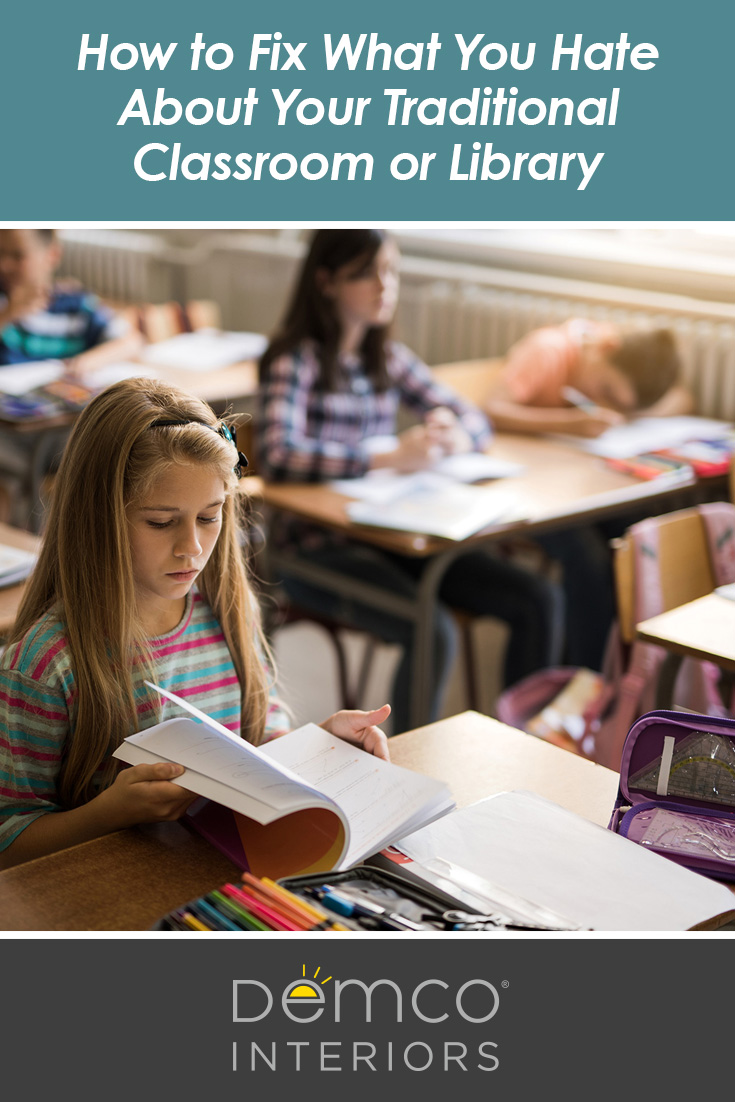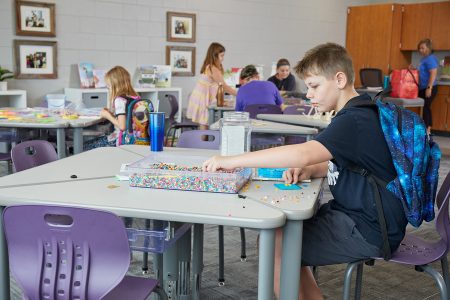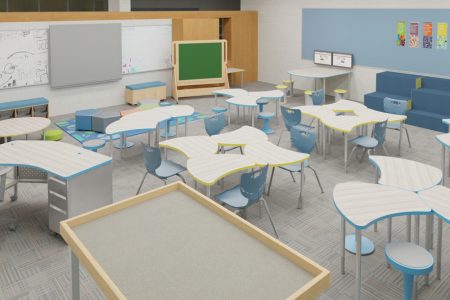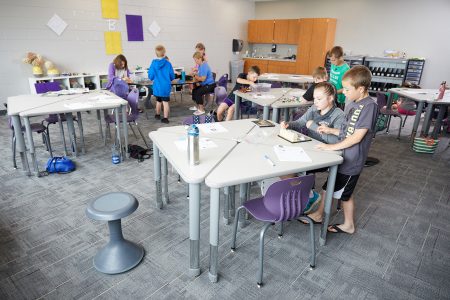 You love teaching and seeing your students learn and grow, but you don’t always love your traditional classroom or cramped library. Many learning spaces are old and outdated, and without a budget to renovate, you’re stuck with them.
You love teaching and seeing your students learn and grow, but you don’t always love your traditional classroom or cramped library. Many learning spaces are old and outdated, and without a budget to renovate, you’re stuck with them.
But the things that irritate you don’t have to stop you or your students from reaching your full potential. Read on to see some of the top space design grievances and how to combat them.
1. Your Furniture Is Inflexible
Big bulky desks, heavy chairs, immobile tables — they’re the mainstays of the traditional classroom. But as teaching methods and the way students learn continue to change, the type of furniture you have in your classroom needs to change as well. Although swapping out an entire classroom usually isn’t feasible, you do have some options.
Start by focusing on obtaining just one piece of furniture that could solve a problem in your classroom. For instance, what if you replaced your small-group table with one or two tables on wheels that you could move around the classroom? You could even fold the tables and push them aside to open your floor space when you don’t need them.
If budgets are a problem (when aren’t they?), start a crowdfunding campaign or turn to your administration or PTO. Make the case for how your new piece of furniture will enrich learning without the need to overhaul your entire classroom.
2. You (and Your Students) Are Sick of Those Heavy Old Desks
Have you noticed a lot of fidgeting, acting out, or disengagement throughout the day? If you were stuck in a hard, uncomfortable desk all day, you’d probably resort to some of these unproductive outlets too. Fortunately, educational leaders are becoming more aware of the benefits of offering flexible seating, and furniture designers have recognized the health benefits of creating adaptable educational furniture such as standing desks and fidget stools.
It may seem unrealistic to think about eliminating all the traditional desks in your classroom, but doing it in stages offers you the flexibility to try a new arrangement. You can start with four or five desks and replace them with wobble stools, floor cushions, or other alternate seating. Rotating students through these choices helps acclimate them to the new seating and eliminates arguments over who can use each one (you’ll be amazed at how motivated students are when given the choice of where to sit).
Learn more about why flexible seating helps reduce behavior issues and motivates students, as well as how to introduce and manage this arrangement, in the Educator’s Guide to Flexible Seating.
3. Your Classroom Feels Too Small and Too Crowded
No matter what the size of your classroom, it probably feels like it’s not big enough or flexible enough to accommodate all the ways you’d like students to learn. Although you may not be able to add square footage to your space, there are ways you can help open up your room.
You may find that when you move a few desks out of the room (or all the desks—gasp!), it feels a lot easier to navigate, as you can create different seating zones and pathways for movement. Truly flexible furniture and work surfaces will also allow you to quickly rearrange and create individual study areas or instant collaboration spaces. You can also open up your floor space for other activities by using tables that can be folded and rolled out of the way.
It may also be time to take a closer look at what you have posted on your walls. Evaluate your displays from a student perspective, and consider how long things have been posted. Ask your students how often they refer to them. Are students engaging with the content along the perimeter of the room on a regular basis, or is it time to declutter and remove some of the items?
Another way to gain perspective is to ask a colleague to swap room evaluations. Ask him or her to look at your room with a critical eye and provide suggestions on how to streamline student traffic or rearrange and declutter. Then, return the favor.
Conclusion
Even if you don’t have the budget to do a complete redesign, you can make small changes to your learning space that can have big implications for your students. Start a fundraising campaign, and use the funds to try a flexible seating arrangement or replace key pieces of furniture. Not only will you look at your learning space in a new light, your students will take notice and be more engaged and ready to learn.
Liz Bowie
Latest posts by Liz Bowie (see all)
- 3 Things You Hate About Your Learning Space (and How to Fix Them) - April 8, 2020
- Modern Learning Spaces: What the Research Tells Us - January 29, 2020
- Best Practices for Library Furniture and Space Design - May 20, 2019
- 4 Mistakes You Don’t Want to Make When Redesigning Your Learning Space - April 15, 2019
- Why Educators Love Flexible Seating - October 31, 2018




